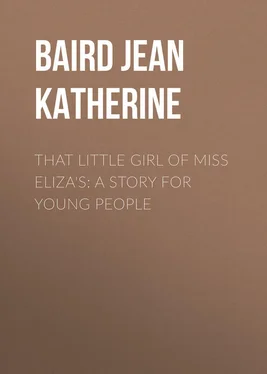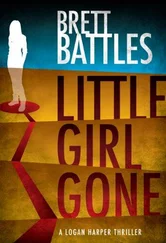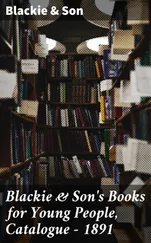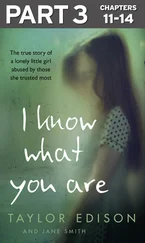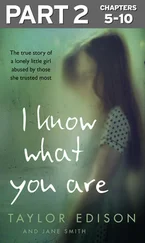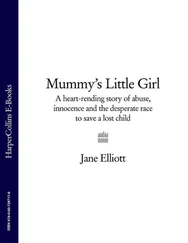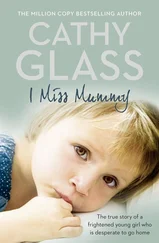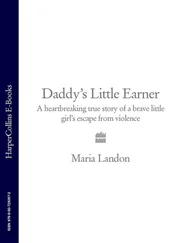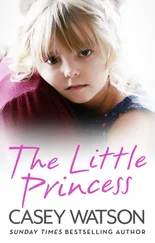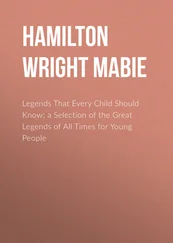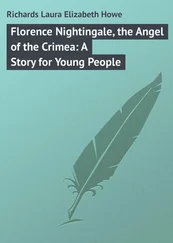Jean Baird - That Little Girl of Miss Eliza's - A Story for Young People
Здесь есть возможность читать онлайн «Jean Baird - That Little Girl of Miss Eliza's - A Story for Young People» — ознакомительный отрывок электронной книги совершенно бесплатно, а после прочтения отрывка купить полную версию. В некоторых случаях можно слушать аудио, скачать через торрент в формате fb2 и присутствует краткое содержание. ISBN: , Издательство: Иностранный паблик, Жанр: foreign_antique, foreign_prose, foreign_children, на английском языке. Описание произведения, (предисловие) а так же отзывы посетителей доступны на портале библиотеки ЛибКат.
- Название:That Little Girl of Miss Eliza's: A Story for Young People
- Автор:
- Издательство:Иностранный паблик
- Жанр:
- Год:неизвестен
- ISBN:http://www.gutenberg.org/ebooks/35822
- Рейтинг книги:5 / 5. Голосов: 1
-
Избранное:Добавить в избранное
- Отзывы:
-
Ваша оценка:
- 100
- 1
- 2
- 3
- 4
- 5
That Little Girl of Miss Eliza's: A Story for Young People: краткое содержание, описание и аннотация
Предлагаем к чтению аннотацию, описание, краткое содержание или предисловие (зависит от того, что написал сам автор книги «That Little Girl of Miss Eliza's: A Story for Young People»). Если вы не нашли необходимую информацию о книге — напишите в комментариях, мы постараемся отыскать её.
That Little Girl of Miss Eliza's: A Story for Young People — читать онлайн ознакомительный отрывок
Ниже представлен текст книги, разбитый по страницам. Система сохранения места последней прочитанной страницы, позволяет с удобством читать онлайн бесплатно книгу «That Little Girl of Miss Eliza's: A Story for Young People», без необходимости каждый раз заново искать на чём Вы остановились. Поставьте закладку, и сможете в любой момент перейти на страницу, на которой закончили чтение.
Интервал:
Закладка:
“Pitty dwess – pitty dwess,” Beth kept repeating. To please her, Eliza took it down and put it on. She looked at herself in the mirror and was better pleased with what she saw than she had been with the reflection of the black-robed figure. While she was dressing, Beth danced about her, exclaiming with delight at her pretty lady and the pretty dress.
So two things became fixed habits in the new household, – a story before bedtime and the pretty dresses in place of black.
So the year passed. The Jersey cow, the chickens, the vegetables from the summer provided for their needs. They needed little money. Wood was supplied from the trees on Eliza’s land.
Beth needed clothes; but her dresses were yet so small that little material was needed, and the shoes were so tiny that they cost but little.
Eliza made the little dresses. She went to the Bend for patterns and material. She even bought a book of styles to see how a child should be dressed. When she sat in the big living room with needle and thread, Beth sat beside her sewing diligently at doll clothes, or cutting fantastic shapes out of paper.
Beth quite fell in love with the pictures in the fashion plates and selected the finest ones of all as Adee.
“’Is is Adee and ’is is Adee,” she would repeat again and again, laying her finger on the representations of splendid womanhood shown on the pages.
Eliza began to look beyond the year. She felt now that no one would ever claim Beth. She would have the child always. She was glad of that. She would need money to educate her. She would need more each year as the child grew older. So she watched the pennies closely. She wore shabby gloves all year in order to lay the money by.
“We’ll both need new clothes by summer time,” she told herself. “There’ll not be much. We’ll get along on little.”
Indeed they needed little. The people about them had enough to keep them warm – and no more. So Eliza and the little girl needed, for the time, only necessities. The flowers which filled the bay windows; the great fire-place with its burning, snapping logs; Old Jerry, the cat, who made up the domestic hearth; Shep, the dog, who played guard to them, and the stories at twilight were sufficient to develop the cultural, sentimental side of life.
During the winter, few callers came. The roads were not good. Sometimes for days the drifts would fill them. It was impossible to go out at night, for no way was lighted. There were services of some kind each Sunday morning; Sunday-school and prayer meeting combined. Twice a month the supply minister came from one of the adjoining towns and held regular services, yet in spite of being alone, these two were never lonely.
The following summer, Eliza found that she would find an unexpected expense in her household account. The sugar box was emptied more quickly than ever before. Sometimes, she would fill a sugar bowl after the midday meal and would find it empty before supper time.
Yet Beth did not care for sugar. She would not touch it in her victuals, if it were there in sufficient amount to be noticeable.
One afternoon, Eliza found Beth standing on a chair before the shelf which bore the household supplies. Her little fists were crammed with sugar.
“What are you doing with it, Beth?” asked Eliza.
“I’se feed’n em. Ey wikes it. Tome and see.”
She made her way out the back door, crossed the yard and garden to where, at the border of the woodland, was a slight elevation.
Eliza followed. The slopes of the hill were alive with ants hurrying to and fro, each carrying a burden. Round about the entrance to the ant hills, Beth had made a circle of sugar.
“Ey wike it so. Ey is so very hungry.” Eliza did not scold her. She herself had been repressed along such lines when she was a child. Although she had long since forgotten the experience, the sympathy and understanding still remained with her.
Later she explained to Beth about not helping herself from the household store. She compromised, however, by promising to fill, and place where Beth could reach it, a small tin cup of sugar with which to feed the ants for the day.
Two years passed in such fashion. There came a time when Beth was undoubtedly of school age. The township school was a mile or more from the old Wells place.
Eliza thought little of that. A mile meant little to one accustomed to walking. She remembered something of the conditions of the school in her own childhood. She herself had been of such a nature that she had not been contaminated. Her presence had repudiated all that was not pure and fine. From the standpoint of a woman, she saw the matters in a different light. She visited the school several times. Forty children were packed in one small room. There were classes from primary to grammar grades. The poor little tots in the chart class sat on hard seats until their backs ached. At recess and noon – almost all carried their dinners – they were turned out to play without restraint, the rough and boisterous with the gentle and timid, the vicious and unruly of older age with the tractable little folks whose minds were as a sheet of clean paper upon which no impression had been made.
Miss Eliza decided then that that particular school was not what she wished for the little girl she was to train for womanhood. For some months, she had learned all she could of new methods of teaching. For the first time in her life, she knew that the A, B, C’s were out of date and that children were taught after a different fashion.
The school at the Bend had grown during the last five years. A supervisor with new ideas, and trained progressive teachers were making the grades equal to the best in the country. Eliza had heard of the work. Because she was interested, she had questioned and investigated.
The Bend was too far away for a child of Beth’s age to walk alone, but Eliza was not one to give up easily.
“If the main road’s closed against me, I’ll find a foot-path or – I’ll break a way through the underbrush,” she was accustomed to say. She did that very thing now.
She visited the primary grades at the Bend. She sat an entire afternoon drinking in everything she could about teaching children. When the pupils were dismissed, she talked long with Miss Davis.
This teacher, who thought only of the help she might be to the child, copied the work she had laid out for the month, gave a first reader and slate to Miss Eliza, and explained how “Willie has a slate” should be taught for the first lesson.
Eliza started in her work. At the close of each month she visited Miss Davis and copied the teacher’s plan for the next four weeks. So the second year of Beth’s life with Miss Eliza passed. The child learned the numbers to twelve. She knew the stories which the first grade children should know, and she read the reader through from cover to cover. Added to this was a vocabulary of fifty words which she could write.
Miss Eliza was happy. The child had ability to learn. Eliza had a great admiration for book knowledge. She had lacked so much in that line herself. It was the unattainable to her; consequently she put great value upon it.
Miss Davis and her corps of teachers taught Eliza more than methods in teaching first grade work. They were fully as old as Eliza herself; but they wore gowns which were quite up-to-date. They arranged their hair to bring out the very best of their features.
They talked about skating and literary clubs, and calls, and afternoon teas. One had even gone out with her pupils and coasted down hill, and not one was shocked or even thrilled when she related it.
Eliza listened. She was not a dullard. To use the vernacular of Shintown, “Eliza Wells was no one’s fool, in spite of her queer old ways.” Her queer old way was loving flowers, giving artistic touch to the dullest places.
Читать дальшеИнтервал:
Закладка:
Похожие книги на «That Little Girl of Miss Eliza's: A Story for Young People»
Представляем Вашему вниманию похожие книги на «That Little Girl of Miss Eliza's: A Story for Young People» списком для выбора. Мы отобрали схожую по названию и смыслу литературу в надежде предоставить читателям больше вариантов отыскать новые, интересные, ещё непрочитанные произведения.
Обсуждение, отзывы о книге «That Little Girl of Miss Eliza's: A Story for Young People» и просто собственные мнения читателей. Оставьте ваши комментарии, напишите, что Вы думаете о произведении, его смысле или главных героях. Укажите что конкретно понравилось, а что нет, и почему Вы так считаете.
